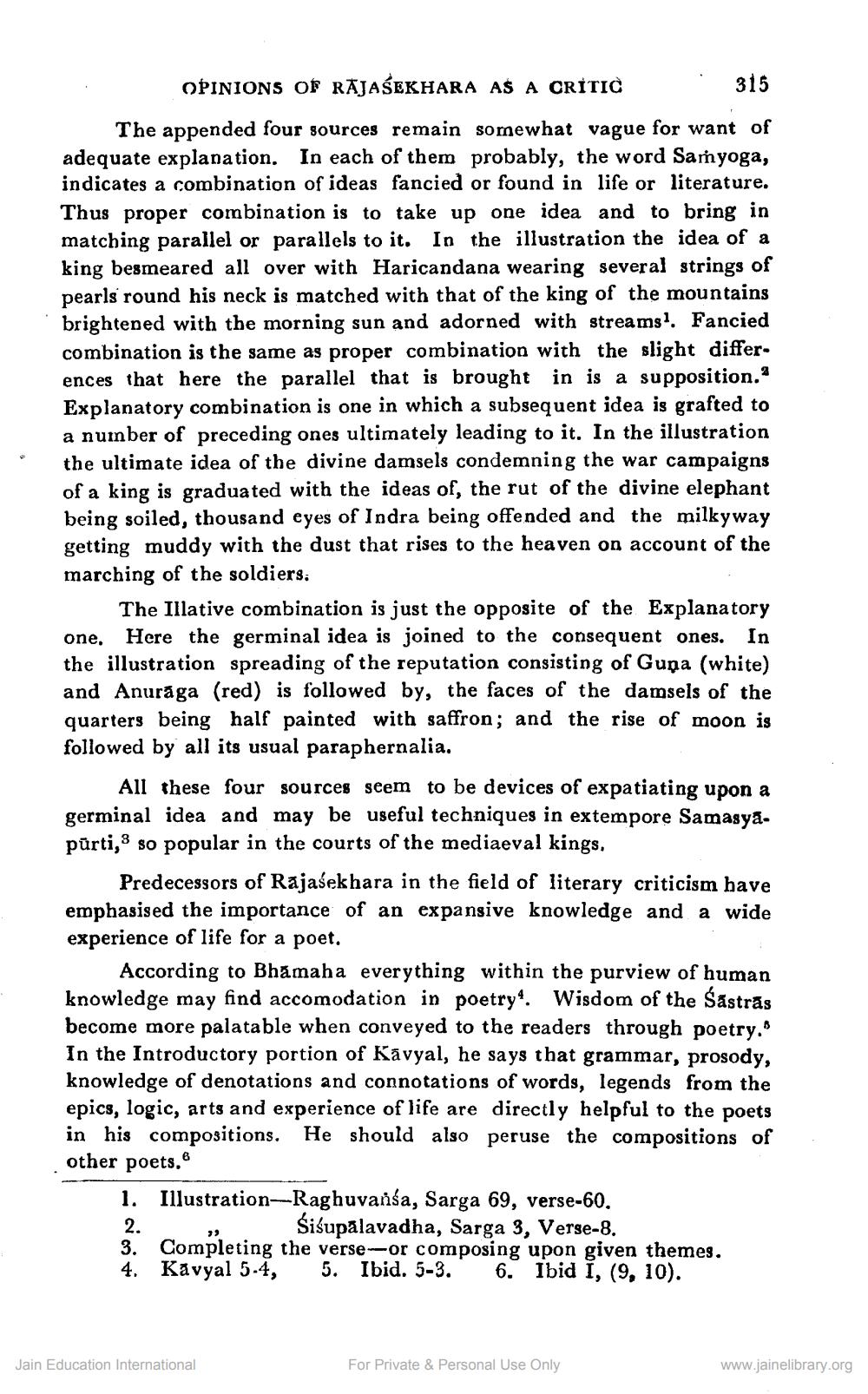________________
OPINIONS OF RAJASEKHARA AS A CRITIC
315
The appended four sources remain somewhat vague for want of adequate explanation. In each of them probably, the word Samyoga, indicates a combination of ideas fancied or found in life or literature. Thus proper combination is to take up one idea and to bring in matching parallel or parallels to it. In the illustration the idea of a king besmeared all over with Haricandana wearing several strings of pearls round his neck is matched with that of the king of the mountains brightened with the morning sun and adorned with streams1. Fancied combination is the same as proper combination with the slight differences that here the parallel that is brought in is a supposition." Explanatory combination is one in which a subsequent idea is grafted to a number of preceding ones ultimately leading to it. In the illustration the ultimate idea of the divine damsels condemning the war campaigns of a king is graduated with the ideas of, the rut of the divine elephant being soiled, thousand eyes of Indra being offended and the milkyway getting muddy with the dust that rises to the heaven on account of the marching of the soldiers.
The Illative combination is just the opposite of the Explanatory one. Here the germinal idea is joined to the consequent ones. In the illustration spreading of the reputation consisting of Guņa (white) and Anuraga (red) is followed by, the faces of the damsels of the quarters being half painted with saffron; and the rise of moon is followed by all its usual paraphernalia.
All these four sources seem to be devices of expatiating upon a germinal idea and may be useful techniques in extempore Samasyapurti, so popular in the courts of the mediaeval kings,
Predecessors of Rajasekhara in the field of literary criticism have emphasised the importance of an expansive knowledge and a wide experience of life for a poet.
According to Bhamaha everything within the purview of human knowledge may find accomodation in poetry. Wisdom of the Śāstrās become more palatable when conveyed to the readers through poetry." In the Introductory portion of Kavyal, he says that grammar, prosody, knowledge of denotations and connotations of words, legends from the epics, logic, arts and experience of life are directly helpful to the poets in his compositions. He should also peruse the compositions of other poets.
1. Illustration-Raghuvansa, Sarga 69, verse-60. Sisupalavadha, Sarga 3, Verse-8.
2.
""
3. Completing the verse-or composing upon given themes. Ibid. 5-3. 6. Ibid I, (9, 10).
4. Kavyal 5.4,
5.
Jain Education International
For Private & Personal Use Only
www.jainelibrary.org




